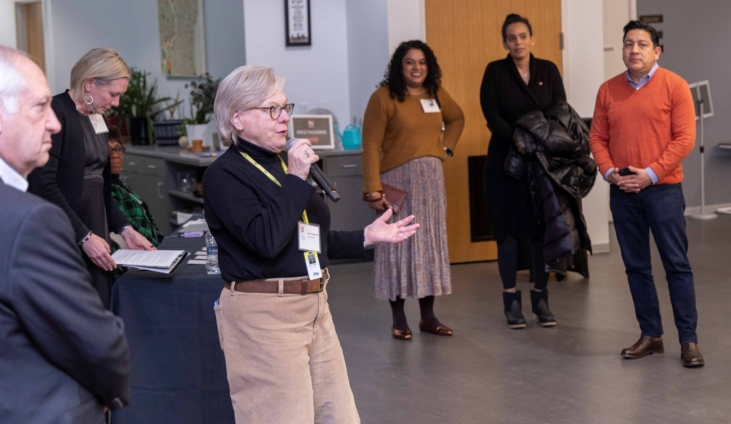The bottleneck in life sciences and health technology is not invention—it is translation.
What ends up killing startups at this stage isn’t a lack of brains, or commitment – it’s the unseen obstacles that are around every corner on the pathway to commercial adoption.
We tapped into our team’s expertise to find out why. Sandy Gomberg, DNP RN, a former health administrator; Kevin Baumlin, MD, FACEP, a retired Emergency Physician; and Wendy Nickel, MPH, a public health advocate, give us a 365-degree perspective on barriers to adoption and how startups can avoid common pitfalls.
Here’s what they had to say.
The Reality of Healthcare’s Front Lines
One of the biggest barriers to clinical adoption is overlooking the real-world experiences of key users—whether they’re doctors, nurses, or patients. A founder may develop a technology that reduces the administrative burden for clinicians, for example, but if they fail to account for the existing complexities of a clinician’s schedule or the IT infrastructure, adoption may be more expensive and time consuming to implement and create yet another source of friction in a clinician’s already busy day.
“Daily life as a clinician is intense. They have long hours, lots of charting, too much bureaucracy and administration. New does not equal good,” noted Kevin. “Doctors are already tired. New technology – new anything takes time to learn and perfect. And it’s time that you don’t have.”
Similarly, founders might solicit input and feedback from clinicians about device efficacy but fail to test it with the population that actually interacts with the product day-to-day – such as nurses or patients. Both Kevin and Wendy point out that it’s also possible for a product to receive validation from investors, but not from the market itself.
“If a well-meaning entrepreneur built a robotic device that helps to mitigate loneliness in older adults, this might be viewed favorably by funders, providers, and other healthcare stakeholders,” observed Wendy. “On the other hand, if this device requires daily charging through an electrical outlet and is highly expensive to re-charge, this could be a significant challenge for a home with limited power sources or an individual living on a fixed income. Similarly, if the robot requires complex instructions to operate, digital literacy could be a major barrier to adoption.”
Sandy shared that innovation – while useful – sometimes has to take a backseat to other, more pressing concerns.
“Administrators are peppered with inquiries from startups and existing vendors wanting to meet with them to discuss new technology and innovation,” she explained. “Day-to-day operations – the delivery of safe, quality healthcare – will always take priority over innovation discussions.”
It’s especially important for founders to do customer research—including the ultimate end users, decision makers, budget owners, and subject matter experts upfront to fully validate the problem, the solution and the viable use cases. Current market dynamics with healthcare and life science industries demand that startups are more ready to engage effectively, not to mention current fundraising dynamics have raised the bar on investment readiness compressing financial runways for startups.
“Early counsel by those with lived experience in product development is a differentiator between success and failure for many startups.”
The Community Perspective: Why Startups Need to Engage
So how can founders stay ahead of these barriers and eliminate the disconnect between the startup’s goals and the real needs of health systems?
“Technology adoption requires real-world testing. It also requires an understanding of the needs and priorities of public health systems,” explained Wendy who lays out five question every founder should be able to answer:
- What are the most pressing problems?
- Has the product been rigorously tested in real-world settings?
- Does it require a level of literacy?
- Which communities benefit from the product and have they been consulted?
- Does it interfere in clinical workflow?
In other words, founders need to design with both the end user and the system in mind, ensuring their product solves real problems without creating new ones. She also points out that the longer founders wait to engage communities in the design process, the more risk there is for missing crucial insights that would impact usability.
“Early counsel by those with lived experience in product development is a differentiator between success and failure for many startups,” explained Wendy.
Take, for example, a health tech innovation that relies on WiFi to transmit data. For founders with reliable internet access, this might seem like a seamless solution. But for the patients using the product, consistent home WiFi access is not a given, nor is the technology fluency needed to set it up. So ultimately, customer discovery is key to gaining trust and buy-in. “If a product is public facing, it is critical to listen to the communities the product serves,” noted Wendy.
Necessary Collaboration: Healthcare Systems and Startups
So how can startups collaborate with healthcare organizations to better meet potential users where they’re at?
Startups that want to truly go the distance – both when it comes to their own success and solving for critical health issues – may have to step outside traditional healthcare settings to reach and resonate with the communities they aim to serve. Wendy notes that startups need to step out of their comfort zone.
“Startups tend to go the traditional route of customer discovery – engaging clinical champions in hospital or academic settings, connecting with scientific researchers, or working directly with technologists,” she explained. “While engaging these stakeholders may support the production of a technology, engaging with non-traditional partners to understand specific communities may be equally as important.”
GE Healthcare, for example, realized that children had an intense negative reaction to MRI machines. To come up with a solution to this problem, Chief Designer Doug Dietz didn’t just iterate possible solutions in a lab setting – he observed children at play in a daycare center, worked with child specialists, and even solicited feedback from children themselves. The result: a completely redesigned MRI machine called the “Adventure Series,” where MRI machines were made to look like spaceships and pirate ships so that children saw them as fun rather than terrifying. This not only helped alleviate fear – it also reduced the need for anesthesiologists, which brought down expenses for the hospital.
“Many initiatives to improve chronic disease prevention and management occur in community settings, such as senior centers, churches, and barbershops,” recommended Wendy. “Startups need to find a conduit to communities, listen, and respond.”
Ultimately, a lack of data is a key barrier to innovating. Removing barriers to translation not only strengthens trust but also allows capital to flow more efficiently, builds stakeholder confidence, and – most importantly – delivers real, measurable improvements in care.
Healthcare organizations prioritizing novel solutions to existing challenges, in turn, must foster an environment where innovation is built into daily operations. Sandy noted that to successfully integrate innovation, healthcare executives “must define, invest in and manage internal processes to allow for a low friction process for innovation to be proposed by internal and external sources.” These systems must align with the organization’s priorities and budgets, integrate with quality and performance metrics, and measure both impact and return on investment.
“Creating this type of infrastructure is not just an operational exercise—it’s a cultural commitment,” explains Sandy. “By reducing barriers and embedding innovation into the core of the organization, leaders signal that new ideas are not peripheral experiments but essential to the mission. This approach ensures that both internal teams and external partners see innovation as a natural, supported pathway rather than an exception to the rule.”
The real needs of health systems and startups should not be at odds with each other, but in practice there is often friction between the two. Without losing sight of their customers, startups must keep the communities they aim to help at the forefront of their development process, while healthcare organizations need to look for ways to thread innovation integration into their daily operations so that it does not get shoved to the wayside.
When healthcare organizations and startups collaborate in this way, promising ideas can move more seamlessly from innovation to impact – redefining what’s possible for healthcare.
Explore how we help startups avoid common pitfalls.







